For a relatively small and compact area, the Shell site on Trumpington High Street has seen a surprisingly wide range of services provided by traders and entrepreneurs from the early 20th century. This article is one of a series about traders based on a presentation given at a Group meeting on 11 October 2012.
The Shell filling station after renovation. Photo: Andrew Roberts, 13 May 2012.
The woodyard was at the site where the Shell petrol station now stands; a somewhat inadequate name for an important establishment which operated in deceptively ramshackle premises with its great tree standing at the front. From the early 1900s, Edwin Smith with, later, his sons Gordon and Cliff, both County cricketers of note, demonstrated great skill and resourcefulness in their business.
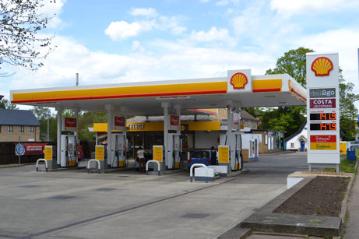
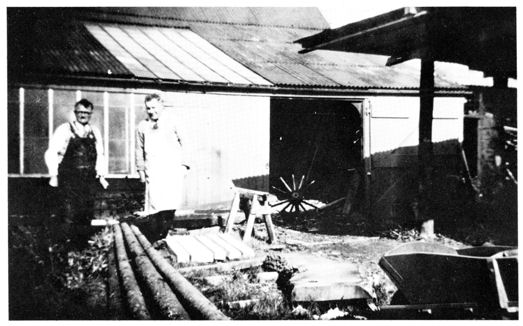
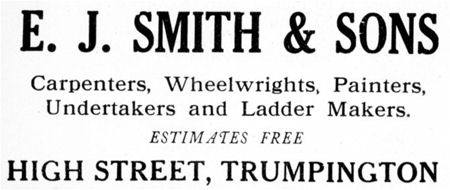
The woodyard, Trumpington. Source: Trumpington in Old Picture Postcards .
Advertisement for E.J. Smith & Sons, 1952-53. Trumpington Parish Magazine .
The photograph below shows ladders with rungs crafted from old cartwheel wooden spokes – an early example of recycling. The ends of the rungs would be shaped to a point using a machine invented by them, like a huge pencil sharpener.
The quality of their products was evident when Selfridges in London sold their wheelbarrows, and the gate at the churchyard remains today as further testimony to their skills.
The Woodyard closed down in the 1950s, with its carpentry business moving to the Smithy at the junction with Church Lane.
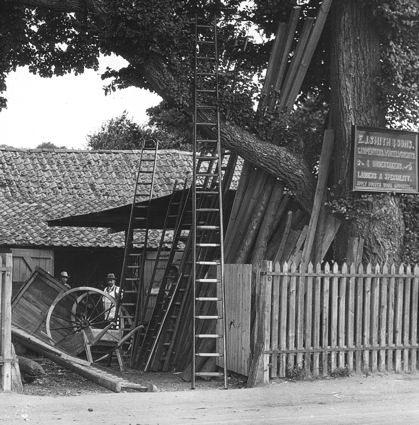
E.I. Smith & Sons, Carpenters, Wheelwrights and Undertakers, Trumpington High Street, 1920s. From a photograph used by Percy Robinson during lectures in the 1920s-1940s.
Another stalwart Trumpington entrepreneur was Harry Newell, whose original shop stood on the High Street in front of the building now occupied by Noel Young’s and the Pharmacy. From the 1900s, Harry ran a business every bit as versatile and inventive as the Smiths’.
In the early days, H.J. Newell & Sons was a cycle shop, described in advertisements as The Old Pound Cycle Depot, a reference to a previous use of this area. This old postcard picture shows Harry proudly posing with his pet dog in the doorway of the modest brick and wood built premises, its windows chock-a-block with cycling accessories. Next door, on the left, is the old lock-up, a rare example of its kind.
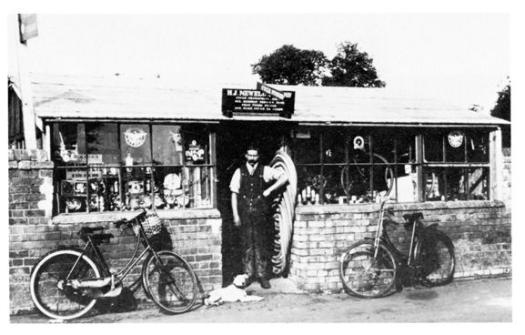
Harry Newell in front of his shop. Source: Trumpington in Old Picture Postcards .
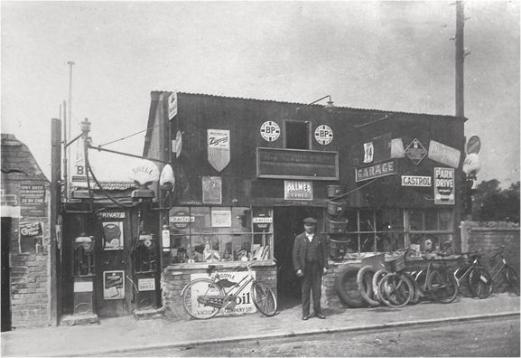
The extended Newell’s shop, 1925. Cambridgeshire Collection.
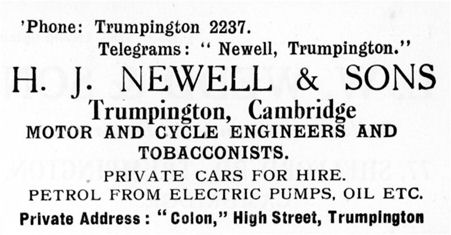
Advertisement for H.J. Newell & Sons, 1952-53. Trumpington Parish Magazine .
An important part of Harry’s enterprise was a taxi hire service. His preference was for large, versatile cars – for example, one that, by temporarily removing seats, could be converted into a hearse. By arrangement with his neighbour in the Woodyard, a coffin would be transferred from the car to a hand-cart which was then pushed by Mr Smith to the church.
In this photograph, a young Frank, later Sir Frank, Whittle, the aeronautical engineer, is topping up his petrol tank. He, of course, went on to invent the turbo-jet engine, perhaps inspired by the impressive exhaust system on the sporty car! The photograph was probably taken in the 1930s when Frank Whittle was reading Science at Cambridge University. Prior to that, he was a fighter pilot and test pilot in the RAF.
In 1957, the whole area was demolished, woodyard, garage, old lock-up and all, to make way for the modern Shell station. The building which now comprises Noel Young’s and the Pharmacy was built and Harry Newell’s business re-housed in its southern half. Again, Harry demonstrated his versatility by setting up his new shop to sell an impressive array of goods including, in addition to cycles and spares, hardware, ironmongery, stains, paints, polishes, garden tools and seeds. How far from Trumpington must we travel today to buy such essentials?
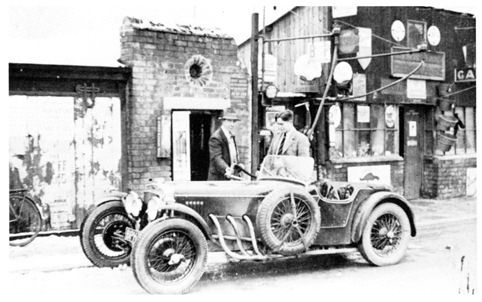
Frank Whittle at Newell’s store, 1930s. Cambridgeshire Collection.
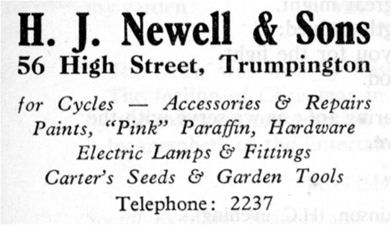
Updated advertisement for H.J. Newell & Sons, 1965. Trumpington Parish Magazine .
After Harry Newell began his well-earned retirement, the shop at number 54 High Street accommodated a disparate string of trades including electrical contractor, haberdasher, auctioneers and leisurewear outlet. Things stabilised in 1992, when fine wine retailer and wholesaler, Noel Young established his acclaimed business. Among the many awards won by Noel Young is International Wine Challenge’s title “Merchant of the Year 2003”. He also became their “East of England Merchant of the Year” no fewer than eleven times.
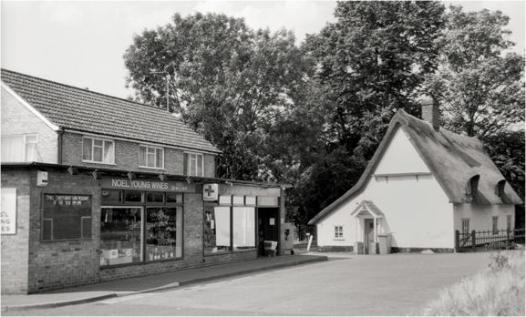
Noel Young Wines, Gregory’s Pharmacy and the thatched cottage. Jo Elliot.
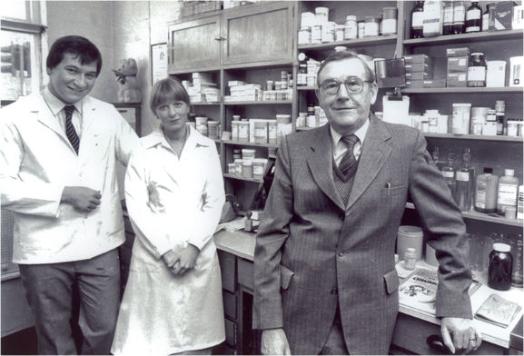
Jeff Gregory, Karen Gregory and Harold Moore on Harold Moore’s retirement, 1986. Cambridge Evening News .
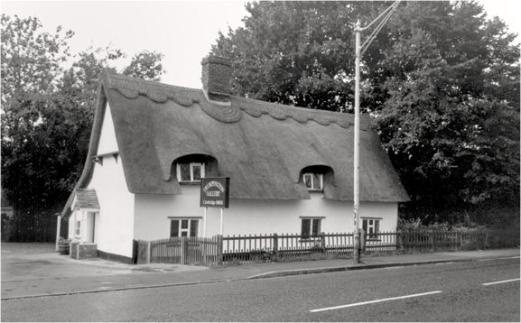
Trumpington Gallery. Florence Jones.